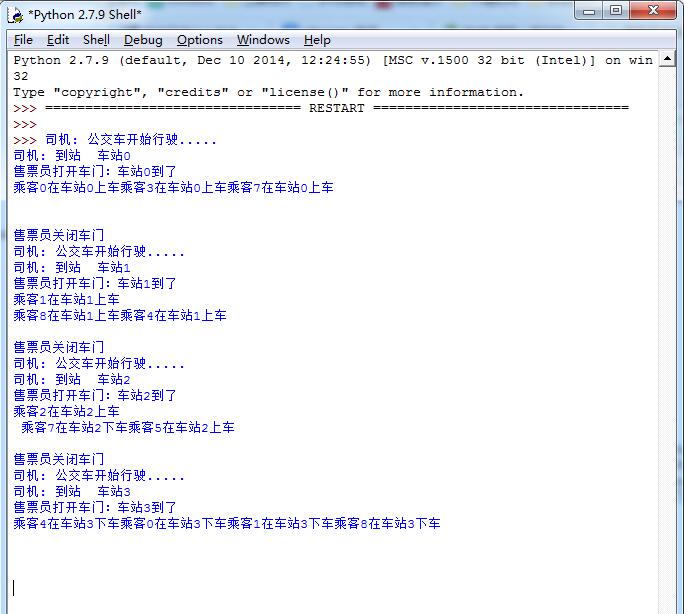python射线法判断一个点在图形区域内外
用python 实现的代码:判断一个点在图形区域内外,供大家参考,具体内容如下
# -*-encoding:utf-8 -*-
# file:class.py
#
"""
信息楼
0 123.425658,41.774177
1 123.425843,41.774166
2 123.425847,41.774119
3 123.42693,41.774062
4 123.426943,41.774099
5 123.427118,41.774089
6 123.427066,41.773548
7 123.426896,41.773544
8 123.426916,41.773920
9 123.425838,41.773965
10 123.425804,41.773585
11 123.425611,41.773595
图书馆
0 123.425649,41.77303
1 123.426656,41.772993
2 123.426611,41.772398
3 123.425605,41.772445
"""
class Point:
lat = ''
lng = ''
def __init__(self,lat,lng):
self.lat = lat #纬度
self.lng = lng #经度
def show(self):
print self.lat," ",self.lng
#将信息楼的边界点实例化并存储到points1里
point0 = Point(123.425658,41.774177)
point1 = Point(123.425843,41.774166)
point2 = Point(123.425847,41.774119)
point3 = Point(123.42693,41.774062)
point4 = Point(123.426943,41.774099)
point5 = Point(123.427118,41.774089)
point6 = Point(123.427066,41.773548)
point7 = Point(123.426896,41.773544)
point8 = Point(123.426916,41.773920)
point9 = Point(123.425838,41.773961)
point10 = Point(123.425804,41.773585)
point11 = Point(123.425611,41.773595)
points1 = [point0,point1,point2,point3,
point4,point5,point6,point7,
point8,point9,point10,point11,
]
#将图书馆的边界点实例化并存储到points2里
point0 = Point(123.425649,41.77303)
point1 = Point(123.426656,41.772993)
point2 = Point(123.426611,41.772398)
point3 = Point(123.425605,41.772445)
points2 = [point0,point1,point2,point3]
'''
将points1和points2存储到points里,
points可以作为参数传入
'''
points = [points1,points2]
'''
输入一个测试点,这个点通过GPS产生
建议输入三个点测试
在信息学馆内的点:123.4263790000,41.7740520000 123.42699,41.773592
在图书馆内的点: 123.4261550000,41.7726740000 123.42571,41.772499 123.425984,41.772919
不在二者内的点: 123.4246270000,41.7738130000
在信息学馆外包矩形内,但不在信息学馆中的点:123.4264060000,41.7737860000
'''
#lat = raw_input(please input lat)
#lng = raw_input(please input lng)
lat = 123.42699
lng = 41.773592
point = Point(lat,lng)
debug = raw_input("请输入debug")
if debug == '1':
debug = True
else:
debug = False
#求外包矩形
def getPolygonBounds(points):
length = len(points)
#top down left right 都是point类型
top = down = left = right = points[0]
for i in range(1,length):
if points[i].lng > top.lng:
top = points[i]
elif points[i].lng < down.lng:
down = points[i]
else:
pass
if points[i].lat > right.lat:
right = points[i]
elif points[i].lat < left.lat:
left = points[i]
else:
pass
point0 = Point(left.lat,top.lng)
point1 = Point(right.lat,top.lng)
point2 = Point(right.lat,down.lng)
point3 = Point(left.lat,down.lng)
polygonBounds = [point0,point1,point2,point3]
return polygonBounds
#测试求外包矩形的一段函数
if debug:
poly1 = getPolygonBounds(points[0])
print "第一个建筑的外包是:"
for i in range(0,len(poly1)):
poly1[i].show()
poly2 = getPolygonBounds(points[1])
print "第二个建筑的外包是:"
for i in range(0,len(poly2)):
poly2[i].show()
#判断点是否在外包矩形外
def isPointInRect(point,polygonBounds):
if point.lng >= polygonBounds[3].lng and \
point.lng <= polygonBounds[0].lng and \
point.lat >= polygonBounds[3].lat and \
point.lat <= polygonBounds[2].lat:\
return True
else:
return False
#测试是否在外包矩形外的代码
if debug:
if(isPointInRect(point,poly1)):
print "在信息外包矩形内"
else:
print "在信息外包矩形外"
if(isPointInRect(point,poly2)):
print "在图书馆外包矩形内"
else:
print "在图书馆外包矩形外"
#采用射线法,计算测试点是否任意一个建筑内
def isPointInPolygon(point,points):
#定义在边界上或者在顶点都建筑内
Bound = Vertex = True
count = 0
precision = 2e-10
#首先求外包矩形
polygonBounds = getPolygonBounds(points)
#然后判断是否在外包矩形内,如果不在,直接返回false
if not isPointInRect(point, polygonBounds):
if debug:
print "在外包矩形外"
return False
else:
if debug:
print "在外包矩形内"
length = len(points)
p = point
p1 = points[0]
for i in range(1,length):
if p.lng == p1.lng and p.lat == p1.lat:
if debug:
print "Vertex1"
return Vertex
p2 = points[i % length]
if p.lng == p2.lng and p.lat == p2.lat:
if dubug:
print "Vertex2"
return Vertex
if debug:
print i-1,i
print "p:"
p.show()
print "p1:"
p1.show()
print "p2:"
p2.show()
if p.lng < min(p1.lng,p2.lng) or \
p.lng > max(p1.lng,p2.lng) or \
p.lat > max(p1.lat,p2.lat):
p1 = p2
if debug:
print "Outside"
continue
elif p.lng > min(p1.lng,p2.lng) and \
p.lng < max(p1.lng,p2.lng):
if p1.lat == p2.lat:
if p.lat == p1.lat and \
p.lng > min(p1.lng,p2.lng) and \
p.lng < max(p1.lng,p2.lng):
return Bound
else:
count = count + 1
if debug:
print "count1:",count
continue
if debug:
print "into left or right"
a = p2.lng - p1.lng
b = p1.lat - p2.lat
c = p2.lat * p1.lng - p1.lat * p2.lng
d = a * p.lat + b * p.lng + c
if p1.lng < p2.lng and p1.lat > p2.lat or \
p1.lng < p2.lng and p1.lat < p2.lat:
if d < 0:
count = count + 1
if debug:
print "count2:",count
elif d > 0:
p1 = p2
continue
elif abs(p.lng-d) < precision :
return Bound
else :
if d < 0:
p1 = p2
continue
elif d > 0:
count = count + 1
if debug:
print "count3:",count
elif abs(p.lng-d) < precision :
return Bound
else:
if p1.lng == p2.lng:
if p.lng == p1.lng and \
p.lat > min(p1.lat,p2.lat) and \
p.lat < max(p1.lat,p2.lat):
return Bound
else:
p3 = points[(i+1) % length]
if p.lng < min(p1.lng,p3.lng) or \
p.lng > max(p1.lng,p3.lng):
count = count + 2
if debug:
print "count4:",count
else:
count = count + 1
if debug:
print "count5:",count
p1 = p2
if count % 2 == 0 :
return False
else :
return True
length = len(points)
flag = 0
for i in range(length):
if isPointInPolygon(point,points[i]):
print "你刚才输入的点在第 %d 个建筑里" % (i+1)
print "然后根据i值,可以读出建筑名,或者修改传入的points参数"
break
else:
flag = flag + 1
if flag == length:
print "在头 %d 建筑外" % (i+1)
以上就是本文的全部内容,希望对大家的学习有所帮助,也希望大家多多支持【听图阁-专注于Python设计】。


